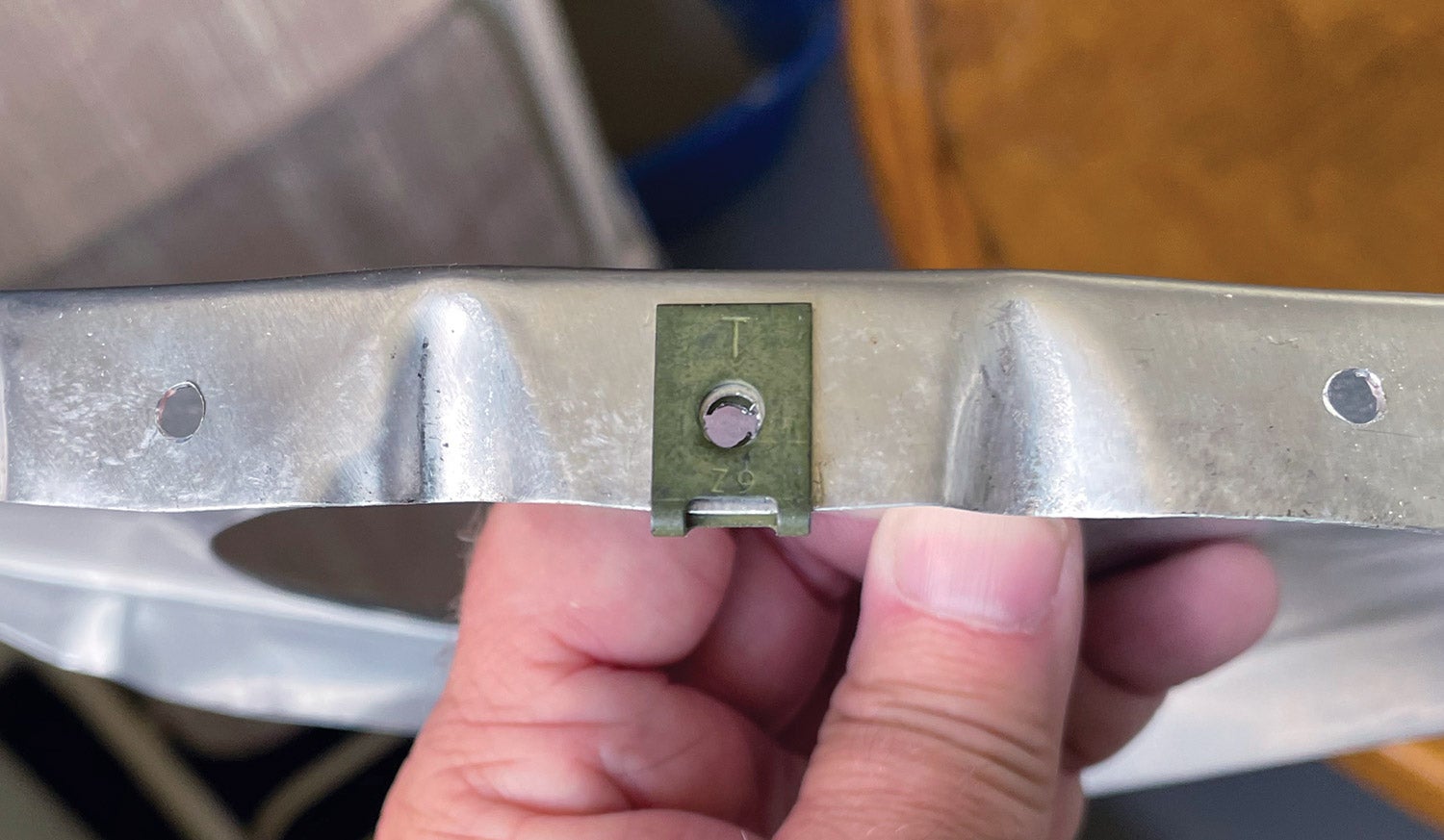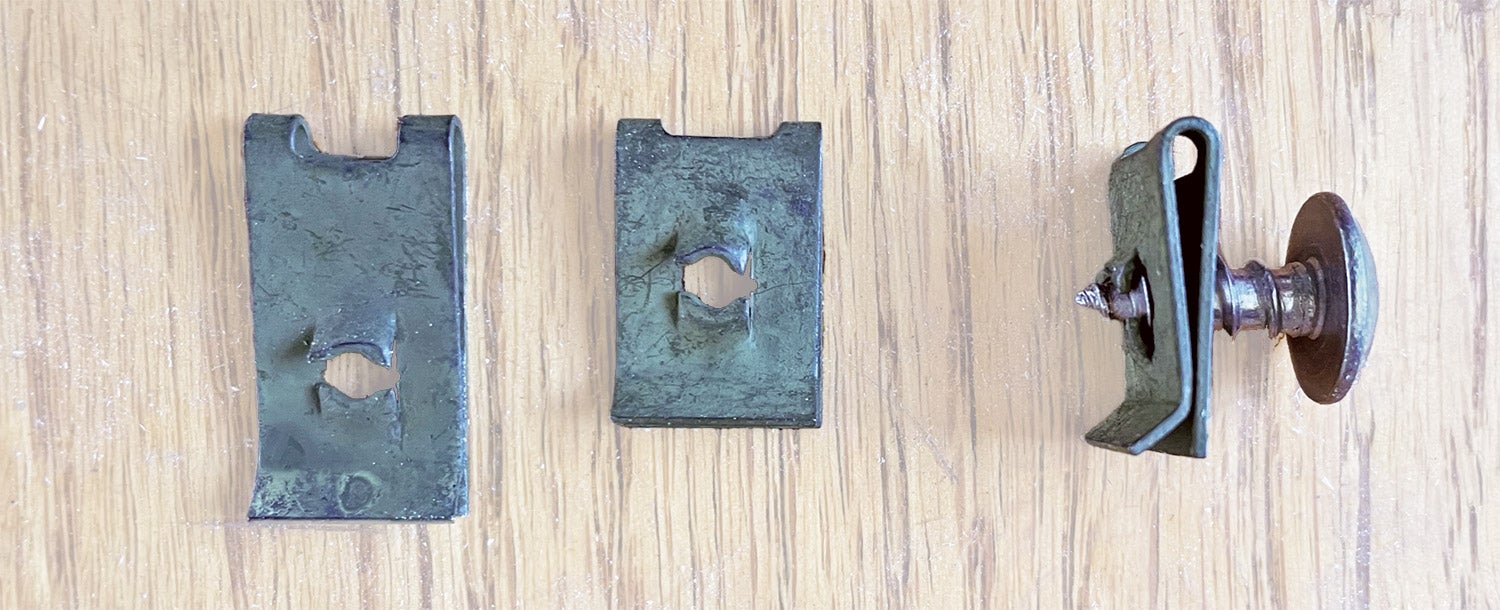
A “speed nut” is a somewhat generic term that is occasionally used for a one-piece spring steel fastener that we can use in our homebuilt aircraft. Another popular name for this fastening device is a Tinnerman nut. Other names include spring nut, speed clip or spring steel fastener. You may recognize this item from the photos shown here. Let’s look at what unique capabilities it has to offer to the aircraft builder. For a definition, speed nuts are one-piece, self-locking, heat-treated steel fasteners that can substitute for threaded nuts or nut plates.
This fastening device was invented back in 1936 by a man (and company) named Tinnerman, who was looking for a faster, simpler way to assemble and ship stoves that he manufactured. The goal was to eliminate the labor of installing conventional nuts. This device was so successful that it became a product itself and the stove business was discontinued. From that point, Tinnerman commercialized these fasteners for other businesses. They were a huge hit in the automotive and aviation industries. The fasteners eliminated the need for welding and riveting—a huge time and cost savings. They are also lighter in weight compared to traditional nuts.

For our homebuilt aircraft projects, they can be used as a substitute for nut plates or conventional nuts in some instances. By understanding their strengths and shortcomings, we can make best use of these fasteners. Let’s consider their benefits.
Tinnerman nuts are easy to install. Note from the picture that in the style of a “U-clip,” they simply slide over the edge of thin material (the edge of a flange, for example). They are considered self-aligning (floating) as their positioning around a hole does not have to be precise. The clip will self-locate after installation (utilizing the point of a sheet metal screw) when the screw fastener is installed. No locknut is required. The design of the threads of the clip and spring steel composition are such that significant torque needs to be applied for installation and removal. And—my favorite—they are considered “blind” fasteners. The installation of the screw does not require a wrench on the other side to hold the clip from turning. This means no access to the back side is required for installation or removal.
Another favorite feature is that they are perfect for experimenting or prototyping. By this I mean you can remove them if you change your mind and they leave no trace of their existence. You can then use regular nuts, nut plates or rivets in the holes left behind. If your aircraft has some component that is riveted and you find yourself drilling the rivets out more than once to take it apart, you might consider replacing the rivets with speed clips and screws!
Why aren’t these fasteners used more often? Here are some of the challenges with their use. The holes used for fastening must be close to an edge. This is not a problem for holes located near edges of sheets or flanges. They are very convenient for inspection panels that often overlap an edge. However, it becomes difficult to use a Tinnerman nut in the middle of a panel where there is no edge (which is needed to slide the clip into position). This is probably the most obvious drawback to implementing this type of fastener. The distance of the hole from the edge is an important dimension detail that needs to be considered when selecting these fasteners from a catalog. Note the photo showing clips of different sizes in this regard.
There are several variations of this popular U-shaped speed nut. Visit your favorite aviation supply house (or hardware vendors including Amazon) for a sample of the styles they carry. Variations include extruded versions that have more extensive threads for machine screws (the ones shown in the photos typically use sheet metal screws).
The most important task is to choose the proper hole size. The diameter of the screw you want to use must match. The distance of the hole from the edge, as we discussed, must be considered. The thickness of the material must be in range for the clip to work. A good supplier will have a diagram listing these dimensions in their catalog to make this analysis easy.
I recommend that builders purchase a small quantity of speed clips in various sizes to experiment with and learn how useful they can be. They are inexpensive and intuitive to use. A matching set of compatible stainless sheet metal screws should also be purchased. I have used them in the past on my aircraft for inspection panels, instrument panel covers and other places where I desired the ability to remove a part on an ongoing basis. Compared to the time, labor and expense of installing nut plates, I found that I was creating more inspection panels on my plane because speed nuts made it so fast and easy. More inspection panels generally equate to a safer plane. Plane and simple!













